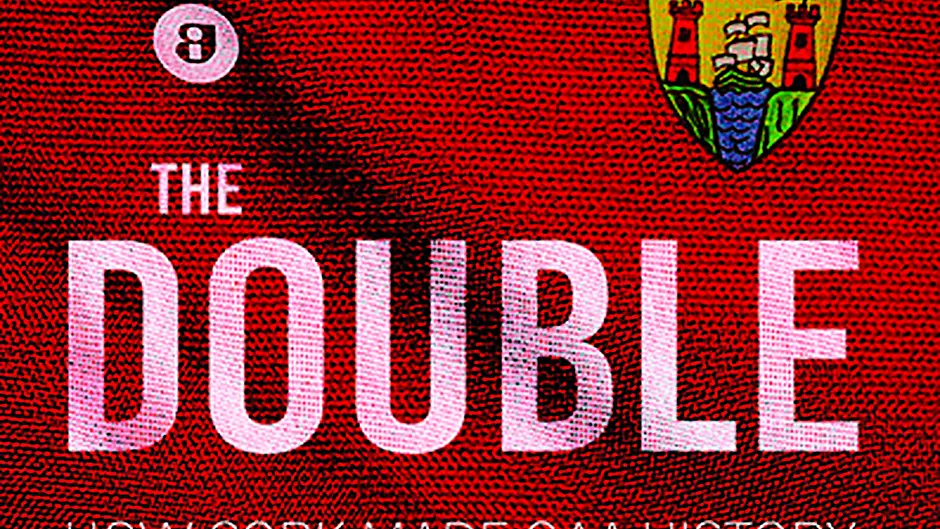Superb new book recalls the glory days when Cork's double vision came to pass
BY DENIS HURLEY
WHILE Dublin’s historic five-in-a-row achievement commanded the headlines, this week saw the 29th anniversary of Cork’s famous double and the launching of a new book commemorating that feat.
The Double: How Cork Made GAA History, written by Adrian Russell and published by Mercier Press, is on sale now and is the culmination of more than 18 months’ work charting the historic occurrence.
While there had been doubles in the past by Cork (1890) and Tipperary (1895 and 1900), they were in an era of clubs representing counties, with the GAA landscape much different. In the modern era, Cork’s double stands alone and Russell wanted to ensure that the stories were collated.
‘I started the process in January 2018,’ he says, ‘and I submitted the first draft a year later, almost to the day. From then, it was a case of doing revisions and it was only in the summer that it fully completed.
‘It was a story I always thought someone should do, the ingredients were there for a brilliant tale. Then, in 2015 there was the 25-year anniversary and that reinforced that feeling – it was the kind of book I wanted to read myself.
‘Obviously, you wonder if you can pull it off, I had a bit of imposter syndrome but once I got up and running and the players got behind it it became easier, the word was out that I was knocking on doors. People were very generous with their time.’
Obviously, West Cork features strongly, with Niall Cahalane, Tony Davis, John Cleary, Larry Tompkins and the late Mick McCarthy all on the football team, but 1990 saw Mark Foley play a key role for the hurlers.
‘John spoke really well about Mick,’ Russell says, ‘they were a kind of double act, going for the same spot on the team but they never let it get in the way of their friendship.
‘The city lads found Mick really good company, quick to sing a song and tell a joke. Niall Cahalane mentions in the book about a “car full of Zulus” leaving Skibbereen on a Tuesday and Thursday evening for training and how it would be the most fun part of the week.
‘Then in the hurling you had Mark Foley, who obviously had worked with the Canon [Fr Michael O’Brien] and so was able to give an insight into what made him such a great coach.
‘Mark was a key member of that team, as he says himself if he had spread the scores out over his career he might be remembered even more but the 2-7 he got against Tipp was huge and then he played an important part in the All-Ireland final against Galway, going up against Tony Keady.’
Russell’s day job is sports editor of The42.ie, based in Dublin, so he used the train journeys up and down as a chance to work on the book.
‘It was great,’ he says, ‘I’d get stuck into reading the Examiner from 1989 and I’d look up again and be in Limerick Junction!
‘The tricky part was ducking out here and there to meet people for coffees but it was really enjoyable. As an editor, you’re dealing a lot with spreadsheets and personnel work so it was nice to have that creative outlet.
‘There were a few interviewees I couldn’t get, such as Teddy McCarthy, which was a pity given he was on both teams. With a lot of guys, it was modesty more than anything, the book covers 1987-93 but they mightn’t have played in 1990 and felt they didn’t want to take from that.
‘The first person I spoke to was Denis Walsh, who was a dual player too and he gave an insight into both and was very articulate, Dr Con Murphy was very important too.
‘These players were childhood heroes of mine, so it was about trying to do the story justice.’
Along with Mick McCarthy, football goalkeeper John Kerins, hurling manager Fr Michael O’Brien and John ‘Kid’ Cronin, the masseur to both teams, have all since passed on, but the accounts of those who knew them helped to paint vivid pictures.
‘I felt it was important to get those memories on paper,’ Russell says.
‘The Canon and Billy Morgan were obviously the two main tent-poles of the book, the characters driving on each camp. It was like a riddle of trying to work out what made the Canon tick, I went to Farna and can remember he was such a massive character.
‘There’s still huge respect and affection for him and so many players had happy memories of Kid Cronin too. He was with both teams and had his older methods like linament oils but he was a great character too, smoking down the back of the bus or playing cards with Dinny Allen.’
It was a different time and capturing that was the key element for Russell.
‘I hope the book conveys the fun of it all,’ he says.
‘Obviously, they took things seriously and wanted to win but there was definitely a contrast to the uber-professional set-ups present now.
‘John Fitzgibbon was someone I was always fascinated with as a kid, he was a great man to get a goal in a big game but he loved the ball-hopping too. At the end of the year, he was asked on RTÉ what the highlight of his year was and he said it was going to Graceland to see Elvis Presley’s home!’







